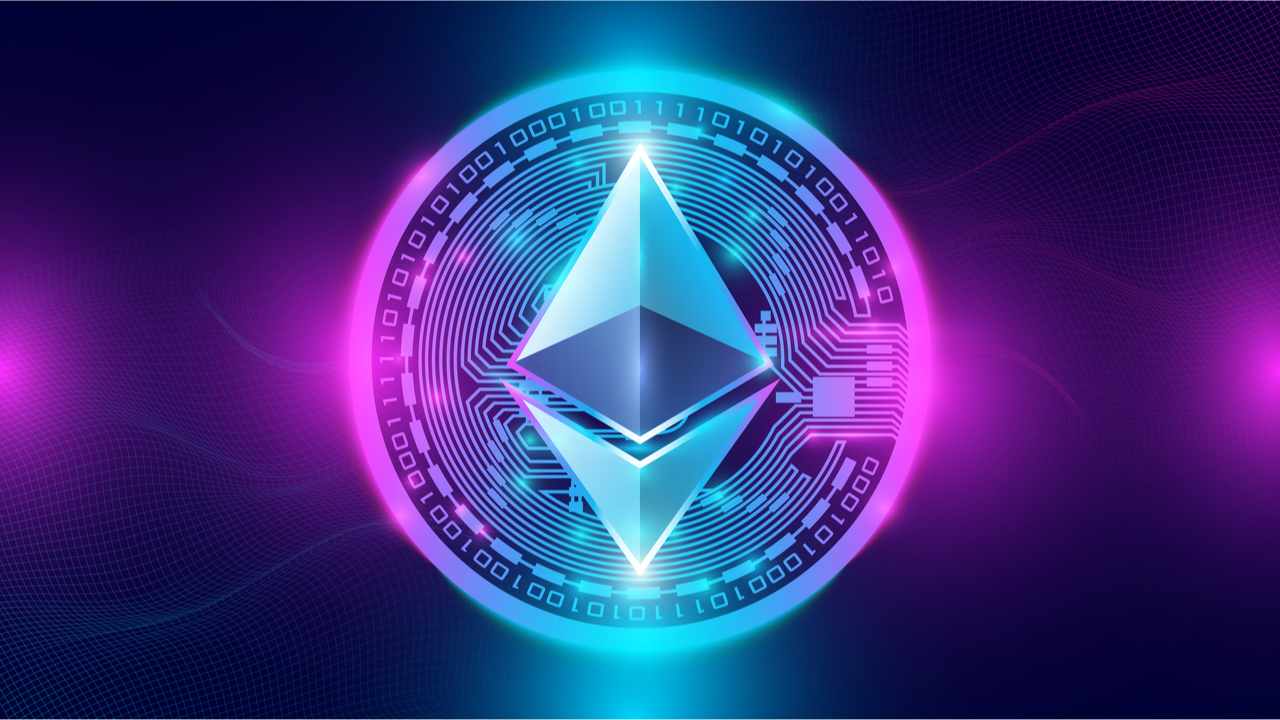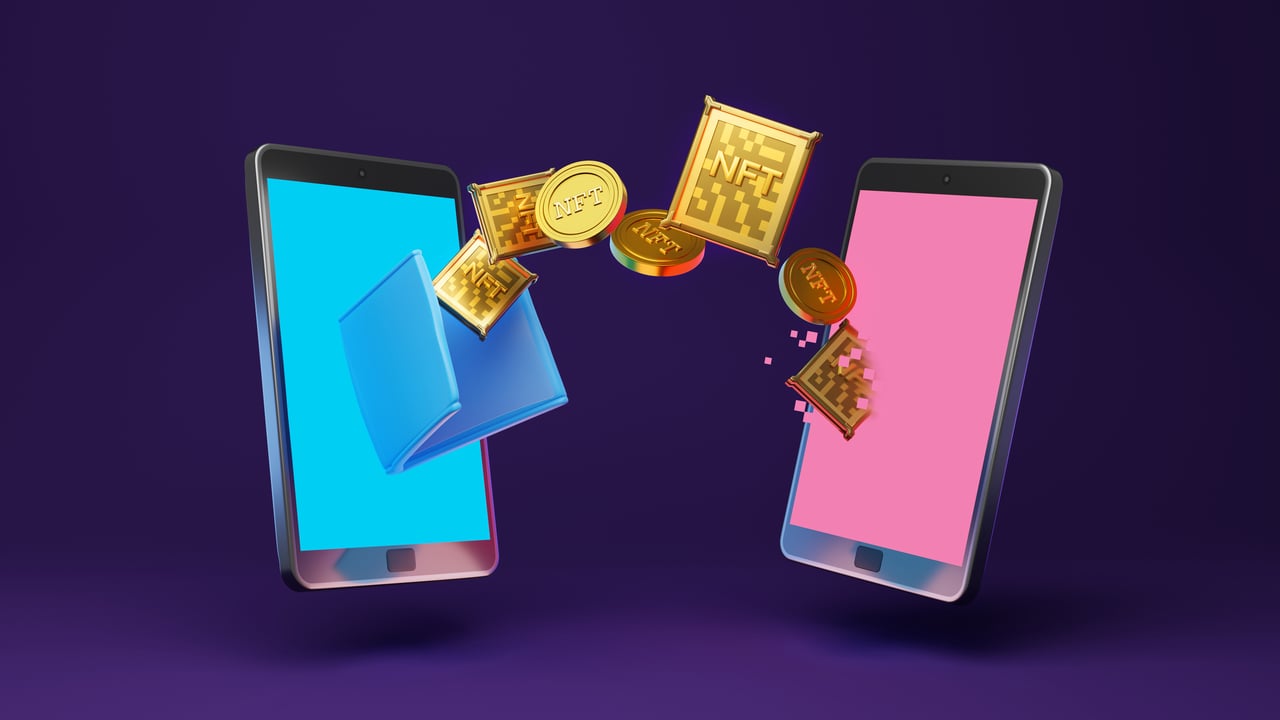 Digital asset-backed securities provider the Etc Group has said it will list an exchange-traded product (ETP) based on an anticipated hard fork of the Ethereum blockchain on September 15. Current holders of Etc Group’s ethereum ETP (ZETH) will be issued with “units of the new security free of charge on a 1:1 unit basis.” Ethereum […]
Digital asset-backed securities provider the Etc Group has said it will list an exchange-traded product (ETP) based on an anticipated hard fork of the Ethereum blockchain on September 15. Current holders of Etc Group’s ethereum ETP (ZETH) will be issued with “units of the new security free of charge on a 1:1 unit basis.” Ethereum […]
Only Wrapped Bitcoin (wBTC) can be stored on MetaMask as this wallet supports Ethereum-enabled distributed applications specifically.
MetaMask is a well-known wallet for Ethereum-enabled distributed applications (dApps). But can MetaMask hold Bitcoin (BTC), which remains the largest cryptocurrency?
For many crypto investors, Bitcoin is an important part of their portfolio. Besides being an investment asset, Bitcoin can also be used as a payment method. Thanks to wallets such as MetaMask, paying via blockchain technology has become much easier. This Ethereum crypto wallet enables millions of investors to participate in everything the crypto market has to offer. Even though Ether (ETH) is a very popular means of payment, most people buy Bitcoin.
Related: How does Bitcoin work and why was BTC created?
However, Bitcoin is not the cryptocurrency you think of when you talk about buying a non-fungible token (NFT) or investing in decentralized finance (DeFi). Still, there may be situations where you would like to use Bitcoin for these actions. So in this article, you will learn how to store Bitcoin with the MetaMask!
MetaMask is an Ethereum wallet that is available as an app and as an extension in the web browser. In other words, MetaMask allows users to store their private keys and then securely use apps and websites with Ethereum-based DApps and smart contracts. One of the most popular crypto wallets, MetaMask recently passed the 30 million user mark in March 2022. This is due, in part, to the rise of decentralized finance (DeFi) and nonfungible tokens (NFTs).
MetaMask is only suitable for tokens that use the Ethereum blockchain, the so-called ERC-20 tokens. If you want to use other tokens (i.e., tokens that are not ERC-20 tokens), you will have to exchange them for ERC-20 tokens. It would then be possible to store these tokens in your MetaMask.
An example of this is Zcash, a cryptocurrency suitable for making anonymous transactions. This cryptocurrency is not based on the Ethereum network and is therefore not an ERC-20 token. But by wrapping Zcash tokens, you can still use Zcash.
Protecting cryptocurrencies often comes up when people first start their crypto research. It is of great importance, which is why a good wallet is indispensable. A hardware wallet is often recommended because it can be used to store your cryptocurrencies offline. But is MetaMask also a hardware wallet?
MetaMask is not a hardware wallet. It is a software wallet. These wallets are also called hot wallets and are connected to the internet. Even so, you can still connect MetaMask to a hardware wallet. This way, you can also use MetaMask with a Ledger, which is the most well-known hardware wallet.
To do so, open the ETH app, and select "Connect Hardware Wallet" to integrate your Ledger hardware wallet into MetaMask. Then, a pop-up window will open, prompting you to choose your device and click "Connect."
When you use a Ledger with the MetaMask browser extension, the software wallet only functions as a portal and not as a wallet. Your private keys do not leave the Ledger so they are not stored on MetaMask.
MetaMask supports Bitcoin, but not in the way an exchange wallet accepts the cryptocurrency. Bitcoin is not an ERC-20 token, so the largest cryptocurrency is not accepted directly by MetaMask. However, you can get BTC into your MetaMask in a roundabout way.
That said, do not try to send Bitcoin directly to your MetaMask. If you try to do so, MetaMask will not be able to receive the token, which could lead to negative consequences. You could lose all the Bitcoin you have sent at once, which would be a terrible situation!
As you have read, it is not possible to send BTC directly to MetaMask. But this does not mean it is impossible to get Bitcoin into your MetaMask wallet. BTC runs on its own blockchain. On this Bitcoin blockchain, transactions can only be sent to Bitcoin addresses. This is true not only for Bitcoin but also for other blockchains such as Ethereum.
On the Ethereum blockchain, it is only possible to send Ethereum-related tokens. Sending Bitcoin over the Ethereum network is comparable to paying with the euro in the United States. The euro is not accepted as a currency in the United States, but you can use your euros in a roundabout way. By exchanging these euros, you can receive the same value in U.S. dollars and use this as a method of payment.
Nonetheless, if you do not want to exchange your Bitcoin for Ethereum, there are other solutions. This means that you need to lock your BTC in one place and then bring it to the Ethereum blockchain as a new token, which represents the Bitcoin locked on the Bitcoin blockchain. This is also called Wrapped BTC (wBTC), which means Bitcoin as an ERC-20 token.
Related: Bitcoin wallets: A beginners guide to storing BTC
There are several ways to wrap your Bitcoin. Let's take Binance as an example. On Binance, BTC and wBTC are two different tokens, so you can trade them. By clicking on “Classic” in the Trade section of Binance, you will be taken to the exchange's trading platform. Here you can find the trading pair with both Bitcoin tokens. Here you can enter how many WBTC you want to buy and confirm this by clicking on Buy WBTC.
What if you don’t see your wBTC in your MetaMask? You can easily change this by adding the wBTC token using the steps below:

To put your wBTC to work, the wallet address of your MetaMask is very important and easy to find. By opening the application and logging in, you will arrive at the main MetaMask screen. Under your account name, you will find your unique code, which acts as your address. This address can be used to receive crypto.
You can share this code with others, but never share the other codes with anyone. Your login and recovery data are meant to protect your assets. If others get these codes, they can abuse them and cause you to lose your crypto assets.
MetaMask is a popular software wallet, but there are also alternative options. Because of all the different blockchains, several wallets are suitable only for a specific blockchain. Two examples are the Yoroi wallet of Cardano and the Phantom wallet of Solana.
Several software wallets are suitable for the ERC-20 tokens on the Ethereum blockchain. The advantage of MetaMask is that you can use it through websites and the app. This is where MetaMask distinguishes itself from its competitors.
The Trust Wallet, for example, is a much respected software wallet, which can be used as a mobile application as an alternative to MetaMask. The MyEtherWallet and Mist Wallet, two website wallets that accept ERC-20 tokens, are also popular MetaMask alternatives.
Although MetaMask is the most popular all-around software wallet, it never hurts to use multiple wallets. Using different wallets is a type of risk management strategy. By using multiple wallets, you will not lose all your crypto assets when only one wallet is hacked.
 On Saturday, the second-largest meme-based cryptocurrency shiba inu has seen a lot of tokens burned during the last 24 hours. According to statistics, the network’s burn rate has increased by 26,592% as 1.4 billion SHIB has been destroyed. Shiba Inu Burn Rate Increases Significantly On February 22, a SHIB team member named “Archangel” revealed that […]
On Saturday, the second-largest meme-based cryptocurrency shiba inu has seen a lot of tokens burned during the last 24 hours. According to statistics, the network’s burn rate has increased by 26,592% as 1.4 billion SHIB has been destroyed. Shiba Inu Burn Rate Increases Significantly On February 22, a SHIB team member named “Archangel” revealed that […]
Etherscan is a block explorer and analytics platform that allows you to access details on any Ethereum blockchain transactions that are pending or confirmed.
Etherscan is the most trusted tool for navigating through all the public data on the Ethereum blockchain and is sometimes called “Ethplorer.” This data includes transaction data, wallet addresses, smart contracts and much more. The application is self-contained and is neither sponsored nor administered by the Ethereum Foundation, which is a non-profit organization.
The team behind Etherscan includes seasoned developers and industry professionals, who developed the Etherscan app to make the Ethereum blockchain more accessible to everyday users.
Although Etherscan is a centralized platform, the app does make it easier for people to search through the Ethereum blockchain.
Etherscan is not an Ethereum wallet, nor is it a wallet service provider. Users don’t receive an Etherscan wallet when they search the Ethereum blockchain on Etherscan.
Etherscan.io is an independent Ethereum-based block explorer. The Etherscan app keeps track of blockchain transactions on the Ethereum network. The app then displays the results like a search engine.
This allows users to find the details of transactions on the Ethereum blockchain, which may give someone peace of mind if their transferred funds have not yet appeared in their wallet.
While Etherscan can track the activity on an Ethereum wallet address, users will need to link the app to an existing crypto wallet to do so.
You may wonder — Is Etherscan free to use? Yes, Etherscan is completely free.
Etherscan allows users to view the assets held on any public Ethereum wallet address. Using Etherscan, enter any Ethereum address into the search box to see the current balance and transaction history of the wallet under consideration. Etherscan will also display any gas fees and smart contracts involving that address.
Users can use Etherscan to:
Users can view any transaction of the Ethereum blockchain on Etherscan. These transactions include failed and pending transactions.
Etherscan can also keep track of the progress of an incoming transfer. One way to track a transaction using Etherscan is to look it up on Etherscan.io using its hash key. The hash provides users with an estimate of how long the transaction will take to confirm. The page refreshes once the transaction is complete.
Etherscan also works as an analytics platform. Anyone can use Etherscan to analyze on-chain metrics like changes to Ether (ETH) gas costs, as well as keep track of their portfolio and monitor their transaction history for suspicious activity.
Only information that is public on the Ethereum blockchain is displayed on Etherscan, so information like a user’s private keys can’t be viewed on the app. Etherscan doesn’t store any private keys and is not involved in any of the transactions shown. The app also cannot be used to solve a transaction failure.
Users are not required to sign up for an account before using the Etherscan app. However, signing up for an Etherscan account does give users access to additional features. These features include the ability to track addresses and receive notifications whenever a transaction occurs. Developers may also sign up to gain free access to Etherscan’s blockchain explorer data and application programming interfaces (APIs).
Thus, users with accounts can add their addresses to the “watch list” on the block explorer to monitor or track their investments. Users can also set alerts so that they’re notified of every incoming transaction via email. Etherscan also provides API services for developers so that they can create decentralized applications.
Etherscan provides the following information for all incoming and outgoing transactions:
To use Etherscan, simply enter any public Ethereum wallet address into the search field at the top of the Etherscan.io homepage. Doing so will allow users to view all the transactions associated with that address.
Exploring a wallet address on Etherscan under the “Transactions” tab will show a list of all ETH transactions (Txns), or transactions that have used gas (Gwei) associated with that specific wallet.

Type the wallet address on Etherscan’s homepage and click “Search” to be redirected to a page that displays all of that wallet’s information. The data will include its ETH balance and its value denominated in United States dollar, as well as an overview of the wallet’s transaction history.

Click on the wallet’s Transactions tab, which will open up a new page displaying details on all the transactions involving that address. Details include the transaction ID, block height and when the transaction was confirmed.

The block height refers to the block in which the transaction was included. The sender and recipient addresses and the total transaction fee are shown as well.
To explore and track a single transaction, users will need the transaction hash or transaction ID, or TxHash. A TxHash is a unique string of numbers that identifies a transaction on the blockchain.
When users input the TxHash into the Etherscan search bar, a list of information on that transaction will be populated on the page. From here, users can go to the Transactions tab to review additional information about the said transaction. Such data includes whether the transaction status was successful, pending or failed, as well as the total amount that was transferred.
The value of the transaction in ETH, as well as the USD value of ETH at the time of the transaction, can also be viewed. Etherscan also displays the timestamp for each transaction in addition to the transaction cost, denominated in USD.
“Gas” refers to the transaction fee associated with a transaction to be executed successfully on the Ethereum blockchain. Transaction costs on Ethereum are referred to as gas fees.
Ethereum’s network can get highly congested. When a considerable amount of traffic is running on Ethereum's blockchain due to Ethereum’s auction-based model, the average gas price goes up as users compete against one another and bid to have their transactions included in the next block. Consequently, transactions are delayed and some transactions fail.

Gas prices vary depending on the block that the user transaction has been included in, as well as the degree of network congestion. Moreover, users may not be able to discern an accurate estimate of the gas fees they’ll be required to pay before initiating a transaction.
To determine a transaction’s gas fees with accuracy, it’s best to use Etherscan’s gas tracker. Etherscan’s gas tracker does more than simply show users the difference in gas prices at various time intervals. It’s also useful for estimating how congested the network is and what the transaction cost will be per transaction.
The Etherscan gas tracker functions as an ETH gas calculator. It examines pending transactions on the Ethereum blockchain to determine how much gas a transaction will require.
Users receive a gas fee estimate so they can adjust the timing of their transactions to avoid high network traffic. Doing so saves transaction costs and allows for cheaper and smoother transactions, without suffering the anxiety that comes with not knowing whether a transaction will fail or succeed.
To see how the balance in a user’s wallet has changed over time, look up the address of the wallet on Etherscan and select “Analytics.” From here, users can see the data analytics of a user’s wallet, such as the user’s ETH balance, the entire transfer history, transactions and fees paid.

Smart contracts can be read and edited without the need for special permissions by using the Etherscan app’s “Read Contract” and “Write Contract” features. These tabs provide real-time information on various tokens and smart contracts. Users may also use these features to initiate a token transfer and approve smart contract transactions.

Removing a token’s access to the user’s wallet can be achieved using Etherscan’s Token Approval Checker. When users interact with DApps to buy or swap tokens, they tap directly into a user’s wallet with their permission. Therefore, DApps are an appealing target for scammers looking to gain access to users’ Ethereum wallet addresses.
If users see suspicious activity or believe that a DApp has been compromised, they can use Etherscan to revoke its access to a specific wallet address. The user’s assets inside the wallet will not be lost, but users will need to reauthorize the tokens when they access the DApp the next time around.
To use Etherscan to review a user’s approved token list, look up the user’s wallet address on Etherscan’s Token Approval Checker. Doing so will provide users with a list of all approved smart contract interactions with that wallet. From there, users can connect their wallet to Etherscan and click “revoke” to ensure that the specific DApp no longer has access to the user’s wallet.
Etherscan is one of the leading tools for accessing reliable Ethereum blockchain data. Etherscan can review smart contract code, track gas prices and monitor the Ethereum blockchain in real time.
Finally, Etherscan is free and doesn’t require a user to register to access all of its features. Overall, it’s a great place to start for users who would like to learn the full range of functionalities of a blockchain, as well as their Ethereum wallet and what information they can garner from a blockchain explorer.

The number of Ethereum addresses holding at least 1,000 ETH dropped to a four-year low this week.
Ethereum is having difficulty keeping its richest investors in line as its native token, Ether (ETH), hints at logging more losses in the near term.
Blockchain data analytics service Glassnode revealed that the number of Ethereum addresses holding at least 1,000 ETH dropped to 6,292 this Monday, the lowest reading since April 2017. At its year-to-date peak, the numbers were 7,239 in January.

On-chain analysts typically observe ETH distributions among addresses to realize retail and institutional sentiments. They consider wallets that hold above 1,000 ETH (around $3.92 million at currency exchange rates) as “whales,” primarily for their ability to influence interim market trends via large sell and/or buy orders.
But as the numbers of these so-called whales drop, it reflects an ongoing selling trend among the richest Ethereum wallet owners. For instance, the number of Ethereum addresses that hold at least 10,000 ETH (or around $39.20 million) has also plunged, from 1,208 in June to 1,156 at the time of this writing, marking an almost 4.5% decline.

But, on a year-to-date timeframe, the numbers have gone up from 1,065 to 1,156, just as the cost to purchase 1 ETH, in the same period, has jumped nearly 450%.
Unlike whales, wallets that hold ETH in small quantities have been at the forefront of Ether’s 2021 price rally.
For example, Glassnode’s data shows that the number of Ethereum addresses with a non-zero ETH balance reached an all-time high of over 71.23 million on Monday. That included wallets with at least 0.01 ETH (~$40), whose numbers shot up to 20.31 million versus 10.66 million at the beginning of this year.
Meanwhile, addresses that hold at least 0.1 ETH (~$400) jumped to 6.44 million this Monday compared to 3.62 million on Jan. 1, 2021. That is almost a twofold rise, signaling a higher retail interest in the world’s second-largest cryptocurrency.

The latest decline in Ether whales appeared as Ether struggled to close decisively above $4,000, its psychological resistance level.
On Tuesday, ETH/USD dropped by over 3.27% to an intraday low of $3,880. Its drop came as a part of a wider correction that started after Ether tested a downward sloping trendline as resistance on Dec. 23.
The chart below shows that the trendline is a part of a descending channel that appears like a “falling wedge.”

In detail, falling wedges are technically bullish reversal patterns that appear after the price trends lower inside a trading range featuring two converging trendlines. The instrument eventually breaks above the structure’s upper trendline ahead or after reaching the apex (where two trendlines converge).
The profit target in a rising wedge scenario is generally obtained after adding the maximum distance between the structure’s upper and lower trendline to the breakout point. That puts ETH’s price en route to the $4,200–5,000 range, depending on its breakout level.

Nevertheless, Ether’s price still has enough room to decline, toward $3,200 in the worst-case scenario. The level is where wedge’s trendlines converge.
Related: 3 reasons why Ethereum price can drop below $3K by the end of 2021
Meanwhile, independent market analyst Pentoshi said that nothing concrete can be predicted for Ether now as it remains stuck between a “bear contested” and a “bull contested” area, as shown in the chart below.

“Maybe it’s the bottom. Don’t care,” tweeted Pentoshi on Tuesday.
“I don’t like when them market gives this many times to buy an area with important historical context like this Would rather pay for confirmation.”
The views and opinions expressed here are solely those of the author and do not necessarily reflect the views of Cointelegraph.com. Every investment and trading move involves risk, you should conduct your own research when making a decision.
 Invictus Capital has unveiled its first non-fungible token collection, called “Out of Africa,” through the Invictus NFT Lab. Through this collection, Invictus Capital will showcase fine art via blockchain technology as well as connect artists from Africa with the rest of the world. Invictus Capital to Release NFT Collection Blockchain investment platform Invictus Capital recently […]
Invictus Capital has unveiled its first non-fungible token collection, called “Out of Africa,” through the Invictus NFT Lab. Through this collection, Invictus Capital will showcase fine art via blockchain technology as well as connect artists from Africa with the rest of the world. Invictus Capital to Release NFT Collection Blockchain investment platform Invictus Capital recently […] In recent times the Ethereum network has received a lot of criticism about the protocol’s data transfer fees and scalability. In a blog post called “Endgame,” published on December 6, the co-founder of Ethereum, Vitalik Buterin discussed plans to improve scaling, the upcoming proof-of-stake transition, and censorship resistance. Buterin Outlines Plausible Ethereum Scaling Roadmap in […]
In recent times the Ethereum network has received a lot of criticism about the protocol’s data transfer fees and scalability. In a blog post called “Endgame,” published on December 6, the co-founder of Ethereum, Vitalik Buterin discussed plans to improve scaling, the upcoming proof-of-stake transition, and censorship resistance. Buterin Outlines Plausible Ethereum Scaling Roadmap in […] During the last seven days, virtual lands sold in the metaverse have outpaced a great number of non-fungible token (NFT) sales. Moreover, metaverse native crypto tokens like axie infinity, sandbox and decentraland and play-to-earn digital assets in general have jumped significantly in value this year. Metaverse Properties Outpace NFT Collections — Play-to-Earn Tokens Rise Following […]
During the last seven days, virtual lands sold in the metaverse have outpaced a great number of non-fungible token (NFT) sales. Moreover, metaverse native crypto tokens like axie infinity, sandbox and decentraland and play-to-earn digital assets in general have jumped significantly in value this year. Metaverse Properties Outpace NFT Collections — Play-to-Earn Tokens Rise Following […] The second leading crypto asset ethereum has been dealing with high fees since the end of June and today the average ethereum transaction fee is between $5 and $34 per transfer. While there’s been a lot of complaints about ether gas costs this year, Ethereum founder Vitalik Buterin has recommended an Ethereum Improvement Proposal (EIP) […]
The second leading crypto asset ethereum has been dealing with high fees since the end of June and today the average ethereum transaction fee is between $5 and $34 per transfer. While there’s been a lot of complaints about ether gas costs this year, Ethereum founder Vitalik Buterin has recommended an Ethereum Improvement Proposal (EIP) […] A South African startup, NFTfi, is reported to have recently raised $5 million which the company intends to use for boosting its business of collateralizing non-fungible tokens (NFTs). Cryptocurrency Loan Marketplace According to a Techcrunch report, NFTfi’s $5 million capital raise was led by U.S. actor Ashton Kutcher’s Sound Ventures. The other investors that participated […]
A South African startup, NFTfi, is reported to have recently raised $5 million which the company intends to use for boosting its business of collateralizing non-fungible tokens (NFTs). Cryptocurrency Loan Marketplace According to a Techcrunch report, NFTfi’s $5 million capital raise was led by U.S. actor Ashton Kutcher’s Sound Ventures. The other investors that participated […]